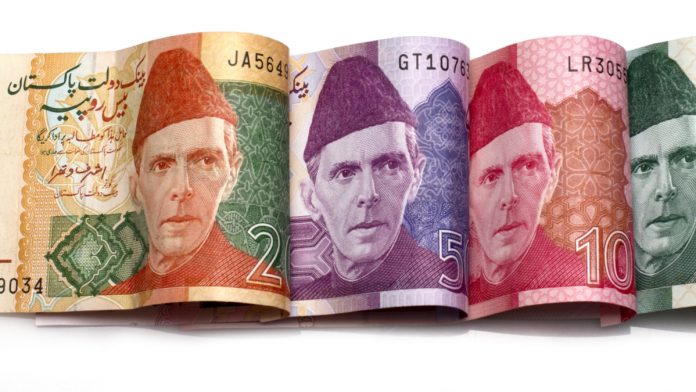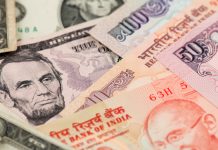- Pakistan Rupee (PKR) under pressure for 2nd day
- Risk off dominates as global covid cases continue to rise
- US Dollar (USD) rises on risk inflows
- Manufacturing & service sector PMI’s in focus
The US Dollar Pakistani Rupee (USD/PKR) exchange rate is advancing on Friday, extending gains for a second straight session. The pair settled +0.1% at 160.25 on Thursday. At 09:15 UTC, USD/PKR trades +0.3% at 160.75. The pair is on track to rally 0.5% across the week, its third straight week of gains.
Risk off sentiment in the broader financial market is dragging on demand for riskier assets and currencies such as the Pakistan Rupee. Domestic Pakistan equities traded under pressure and the benchmark Karachi 100 index trades -0.6% at the time of writing.
Concerns over rising covid cases is dragging on market sentiment as lockdown restrictions are tightened in Europe and Joe Biden steps up the fight against the pandemic. Whilst vaccine distribution is picking up, it is still far too early for any results to be showing through.
In Pakistan financial exports of ICT and Telecommunications Services have grown 43% to $194 million in December compared to $135 million the same month last year. The is the highest level of receipts for a single month.
For the July – December period these exports surged 40% to $958 million compared to $684 million in the same period last year.
The Pakistan Government has a target of $5 billion for export remittances through IT and IT services during the next three years.
The US Dollar is trading higher versus its major peers in a flight to safe haven. US equity futures are also trending lower reflecting the risk off climate.
Yesterday US jobless claims revealed 900,000 Americans signed up for unemployment benefit. This was just slightly below the 965,000 the previous week but still unnervingly high.
Attention will now turn towards the manufacturing and service sector PMI data. The figures are expected to show resilience in the manufacturing sector but a weakening service sector.





